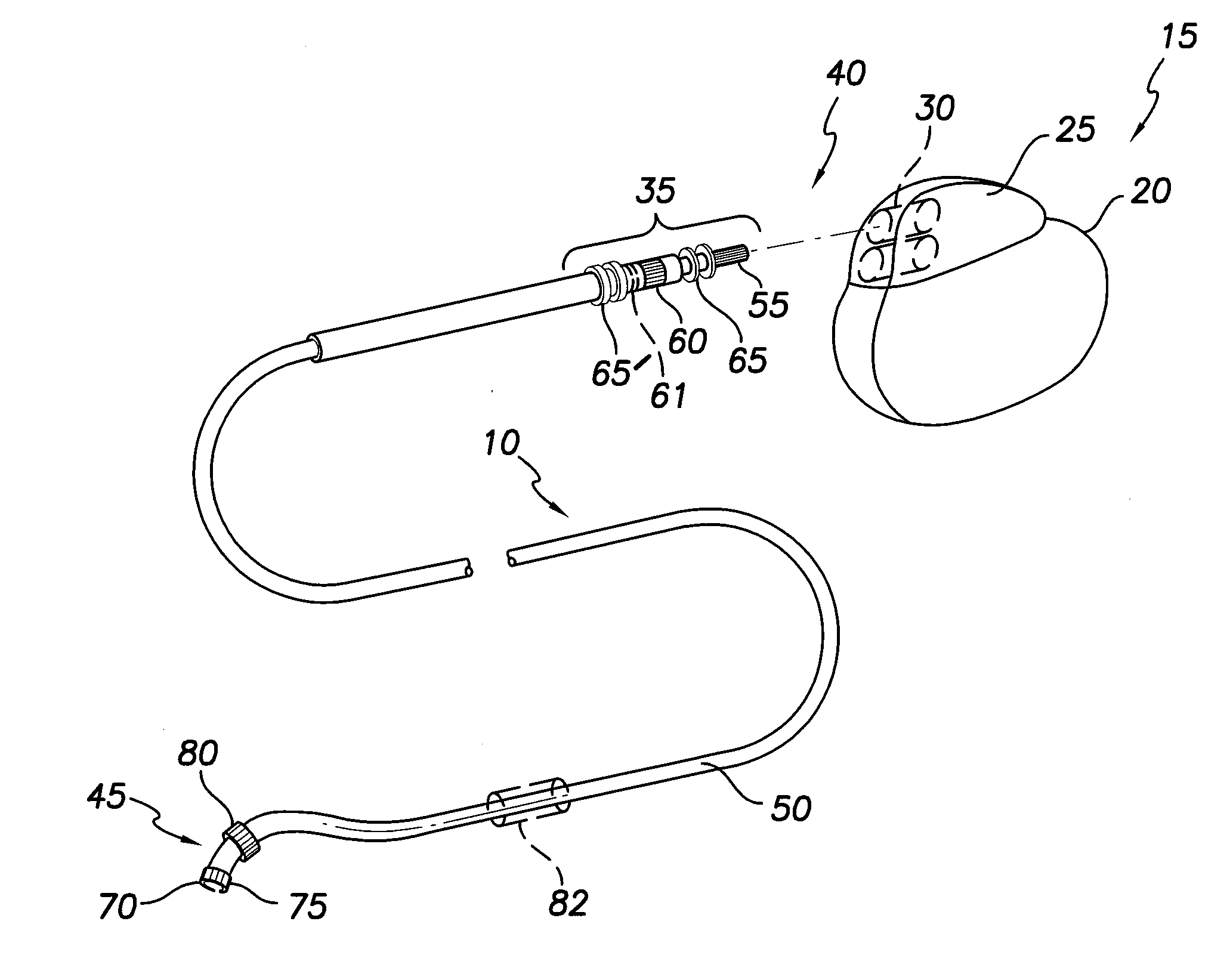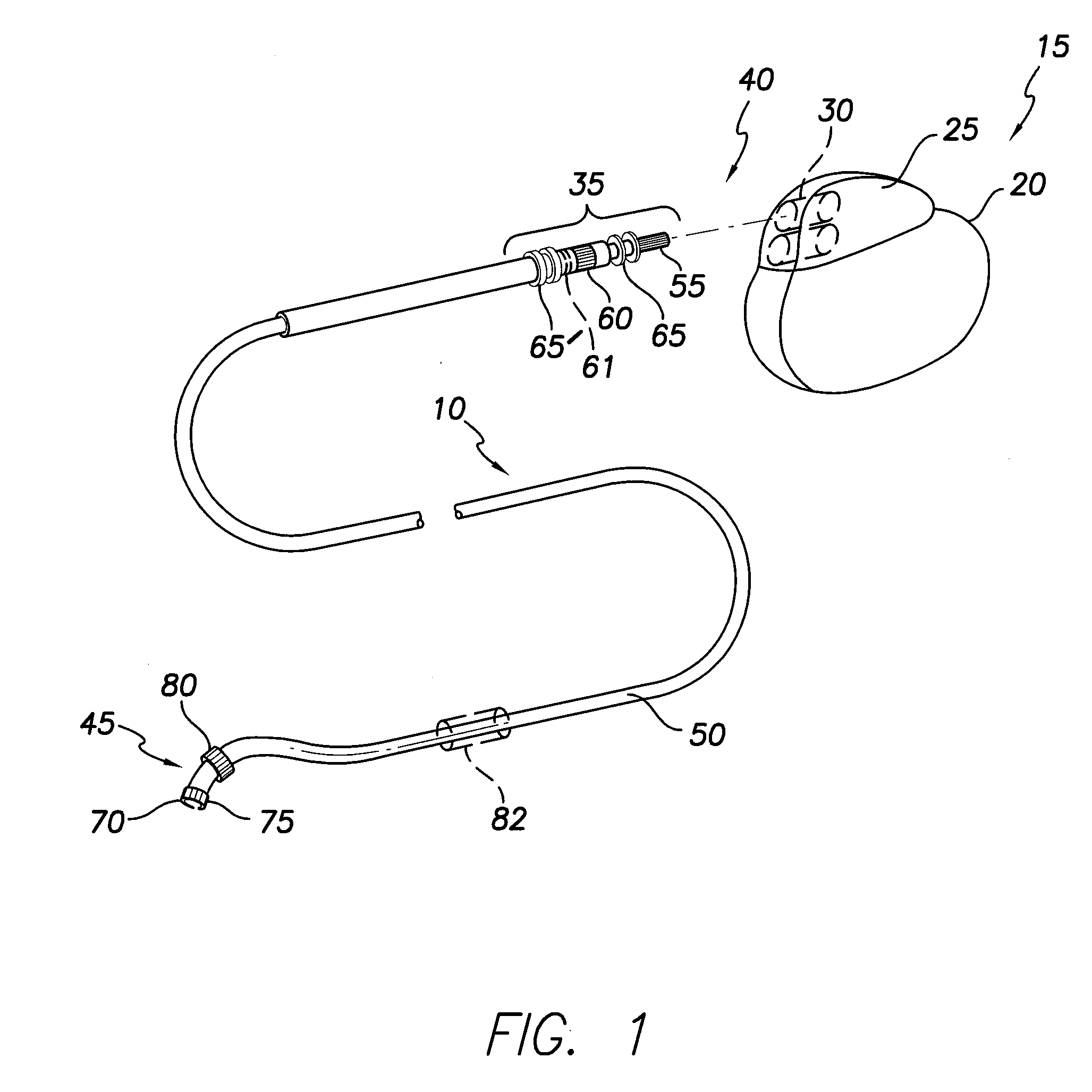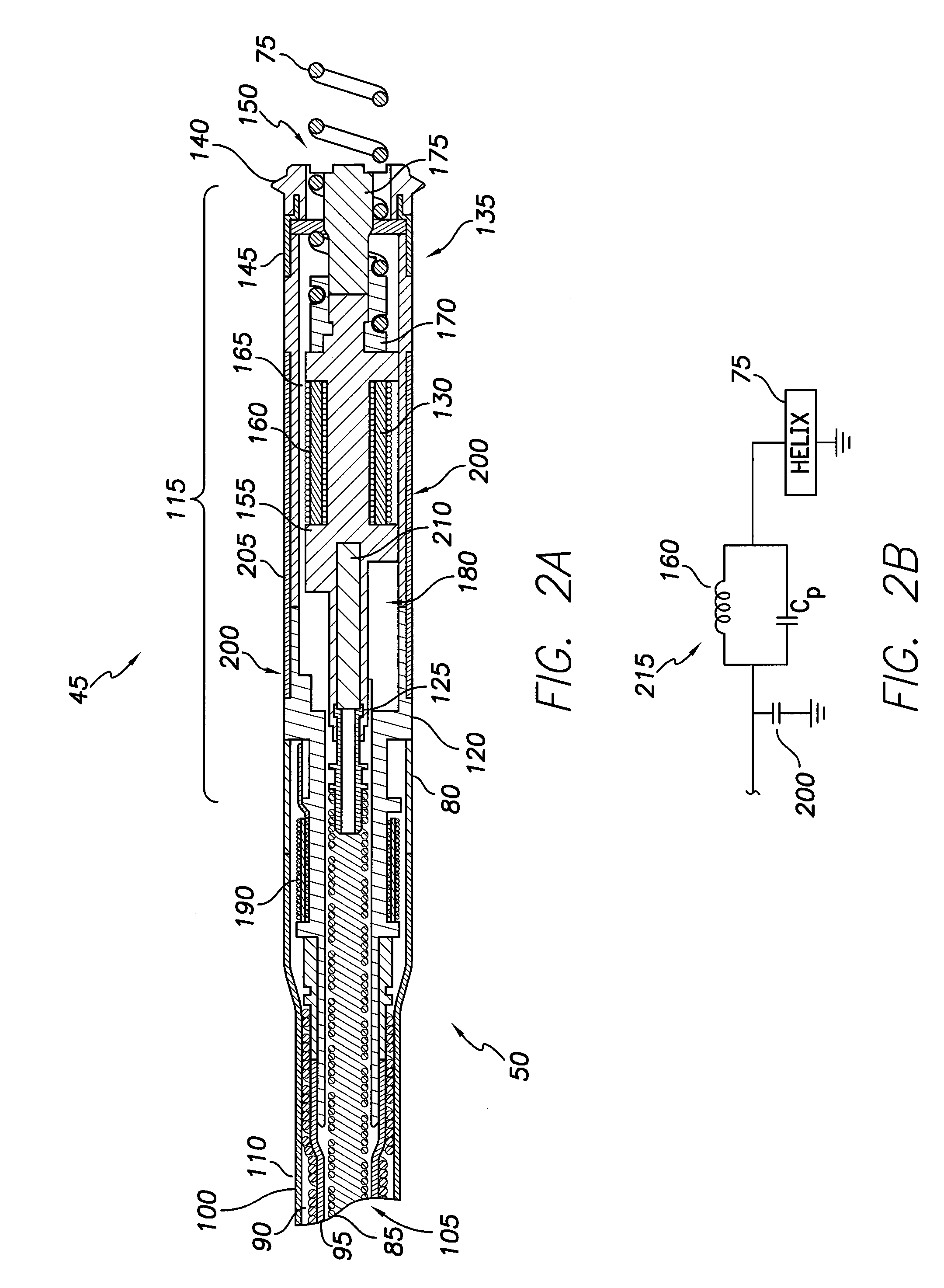Reducing resonant currents in a resonating circuit during MRI scans
a resonating circuit and resonant current technology, applied in the field of implantable medical leads, can solve the problems of deteriorating stimulation thresholds, prone to heating and induced current, and existing implantable medical devices
- Summary
- Abstract
- Description
- Claims
- Application Information
AI Technical Summary
Problems solved by technology
Method used
Image
Examples
Embodiment Construction
[0016]Supplying a RF resonant circuit, such as a LC tank circuit, at the distal end of a lead has shown great RF heating reduction independent of lead configuration, lead length and termination conditions. However, recent in-vitro tests also confirmed that due to resonant current at RF frequencies and series resistance, heating of a self-resonant inductor measured at the lead distal end header can be significant in gel (about 19 TC). Component heating in implantable medical leads is due to dissipated power. Power dissipation is represented as P=I2R, where I is electrical resonant current and R is the series resistance at the resonant frequency. Reducing I or R or both can, therefore, reduce heating. Additionally, electrical modeling shows that input current at the resonant circuit is proportional to the resonant current I, therefore, lowering input current at the LC tank is helpful to reduce component heating.
[0017]Disclosed herein is an implantable medical lead employing a lead str...
PUM
| Property | Measurement | Unit |
|---|---|---|
| Frequency | aaaaa | aaaaa |
| Frequency | aaaaa | aaaaa |
| Capacitance | aaaaa | aaaaa |
Abstract
Description
Claims
Application Information
 Login to view more
Login to view more - R&D Engineer
- R&D Manager
- IP Professional
- Industry Leading Data Capabilities
- Powerful AI technology
- Patent DNA Extraction
Browse by: Latest US Patents, China's latest patents, Technical Efficacy Thesaurus, Application Domain, Technology Topic.
© 2024 PatSnap. All rights reserved.Legal|Privacy policy|Modern Slavery Act Transparency Statement|Sitemap



